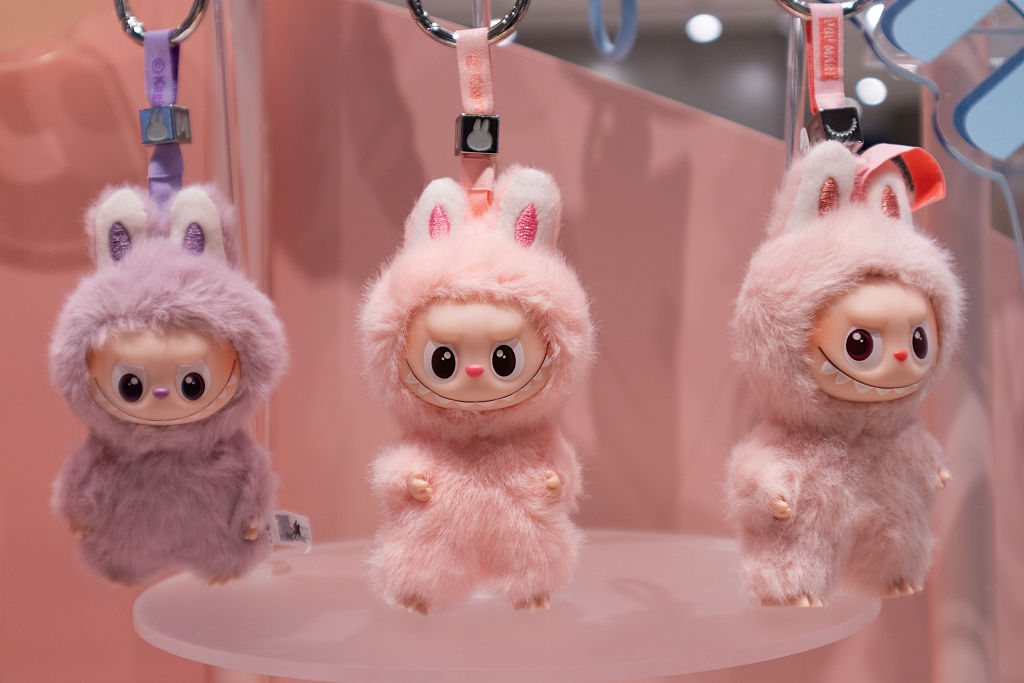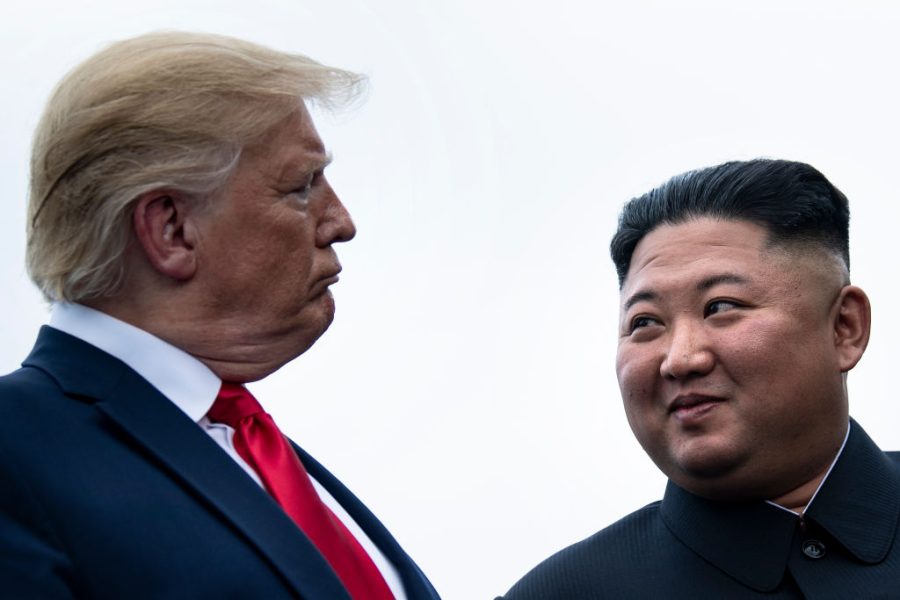I don’t recall how it happened. One moment I was a sane member of society, the next I was at an arcade, slotting coin after coin into a claw machine – and on the other side of the glass, taunting me with her feral grin, was the object of my desire: Labubu.
Labubu is a mischievous, furry elf-monster with bunny-like ears and distinctive sharp teeth. Depending on who you ask, she is either incredibly cute or incredibly creepy. She exists in many forms – most notably as a key-ring collectible plush doll – embodying an ugly-cute aesthetic called kimo-kawaii in Japanese that both unsettles and endears. Her creator, Hong Kong–born and Netherlands-raised Kasing Lung, was inspired by Nordic folklore. “I’ve always been drawn to creatures that live in the space between fantasy and reality – figures that are both familiar and mysterious,” he said.
Labubu made her debut as a character in Lung’s 2015 picture-book trilogy, The Monsters. In 2019, Lung began collaborating with Pop Mart, China’s largest designer toy company, and in 2023 the latter introduced a key-ring series with each model retailing for about $30. Often, the toys are sold in “blind boxes” that conceal the model you’re buying. In April 2024, the K-pop star Lisa hung a Labubu from her $2,600 purse, setting off a new fashion trend – even Birkin bags have become a medium for flaunting your Labubu. Pop Mart stock has since soared by more than 1,000 percent.
This summer, the Labubu frenzy reached a fever pitch, fueled by hundreds of thousands of unboxing videos on TikTok, short supply and skyrocketing demand. Gone are the days when buying collectible toys made you an outcast geek; today, it’s your ticket into the coolest club in town – sometimes literally. The Brooklyn Monarch in East Williamsburg has been hosting Labubu raves, attracting hundreds of people dressed head-to-toe in toy-like clothing, Labubus clipped to their belts. In June, a four-foot Labubu figure sold at auction for $150,000. Customers have camped overnight in front of Pop Mart stores to purchase new releases, which sell out within minutes on the Pop Mart app. A new underground market of “Lafufus” – fake Labubus – has emerged to capitalize on the scarcity; they, too, have become a cult favorite despite their defects, which merely amplify the original’s unsettling charm.
I myself got sucked into the hype by my Instagram algorithm, which for a few weeks nearly exclusively fed me Labubu reels. Some owners dress their Labubus in cute designer outfits. Other Labubu owners even give their Labubus their own mini Labubus. The chain of accessories for the accessory seems endless. They are taken out to events, promenaded, and included in human rituals. My personal favorite: when owners bring their Labubus to church to be blessed by the priest, or to receive a sprinkling of holy water.
Some online conspiracy theorists see such blessings as necessary: Labubu’s feral grin and quick rise to fame have sparked a theory that she’s demonic. Such fears intuit the darker side of the phenomenon. Pop Mart’s marketing strategy exploits the competitive desire at the heart of consumerism: make it scarce, keep people coming back. The blind-box scheme adds an element of excitement and mystery; if people don’t get the specific Labubu they want, they must go back for more.
A popular economic explanation for Labubu’s meteoric rise is the “Lipstick Effect.” When larger luxuries such as fancy cars or homes are out of reach – as is the case for many millennials and zoomers – consumers find comfort in purchasing “small luxuries.” Increasingly often, that small luxury is a toy. Labubus are an expression of the dying purchasing power of the middle class.
They’re also an expression of a wider nostalgia for childhood that is far from unique to Labubu. Adults are increasingly seeking emotional refuge in the aesthetics and comforts of their youth. We can see this broader cultural regression in the adult friendly toy market and in such phenomena as “Disney adults” – grown-ups who fashion much of their identity around loving the company. As of last year, adults are the biggest consumers of toys, surpassing preschoolers for the first time in history. In the first quarter of this year, they spent $1.8 billion in toy sales, making them the fastest-growing age demographic in the market. Like other aestheticized nostalgia objects, Labubu offers a fleeting high, a childish joy, and the feeling of success when you win something rare and desirable.
It took me three attempts to win my Labubu. Another, ordered through the Pop Mart app the second new stock was dropped, is on its way. I already feel a sense of buyer’s remorse; eventually, the hype will wear off and there’ll be mountains of Labubus in landfills, fitting monuments to modern consumerism: grotesque, adorable and totally unnecessary.
Still, I can’t help loving them. They are a flash of amusement, something absurd and bright in a world that often feels dull. There’s something refreshing about giving in to the enthusiasm around a useless object that doesn’t pretend to be more than it is. Maybe I will take my Labubus to church and sanctify their uselessness. Maybe I’ll buy a designer handbag worthy enough for them to bedazzle. Or maybe I’ll just keep them on the shelf, grinning back at me – monstrously cute, weirdly disconcerting, a little dose of dopamine to get me through the daily drudgery of life.


























Leave a Reply